Musical Performance with Franco Prinsloo and Merna Gubuza
The Land Acknowledgement (opening) on 17th of August 2023 was respectfully followed by a musical performance, which included the magical voice of Merna Gubuza and composer/musician Franco Prinsloo on piano.
The performed pieces, composed by Franco Prinsloo is a setting of "Prayer to the Young moon" a poem by the !Kun poet !Nanni from the late 19th century, translated into English by Jack Cope. This piece also speaks directly to the video installation by Sonya Rademeyer which is a video performance on a recording of the same composition performed by Vox Chamber Choir.
The second piece was an Afrikaans translation of "Slaapliedjie van die Springbok Moeders" by /Xam poet |han≠kass'o translated into Afrikaans by Antjie Krog.




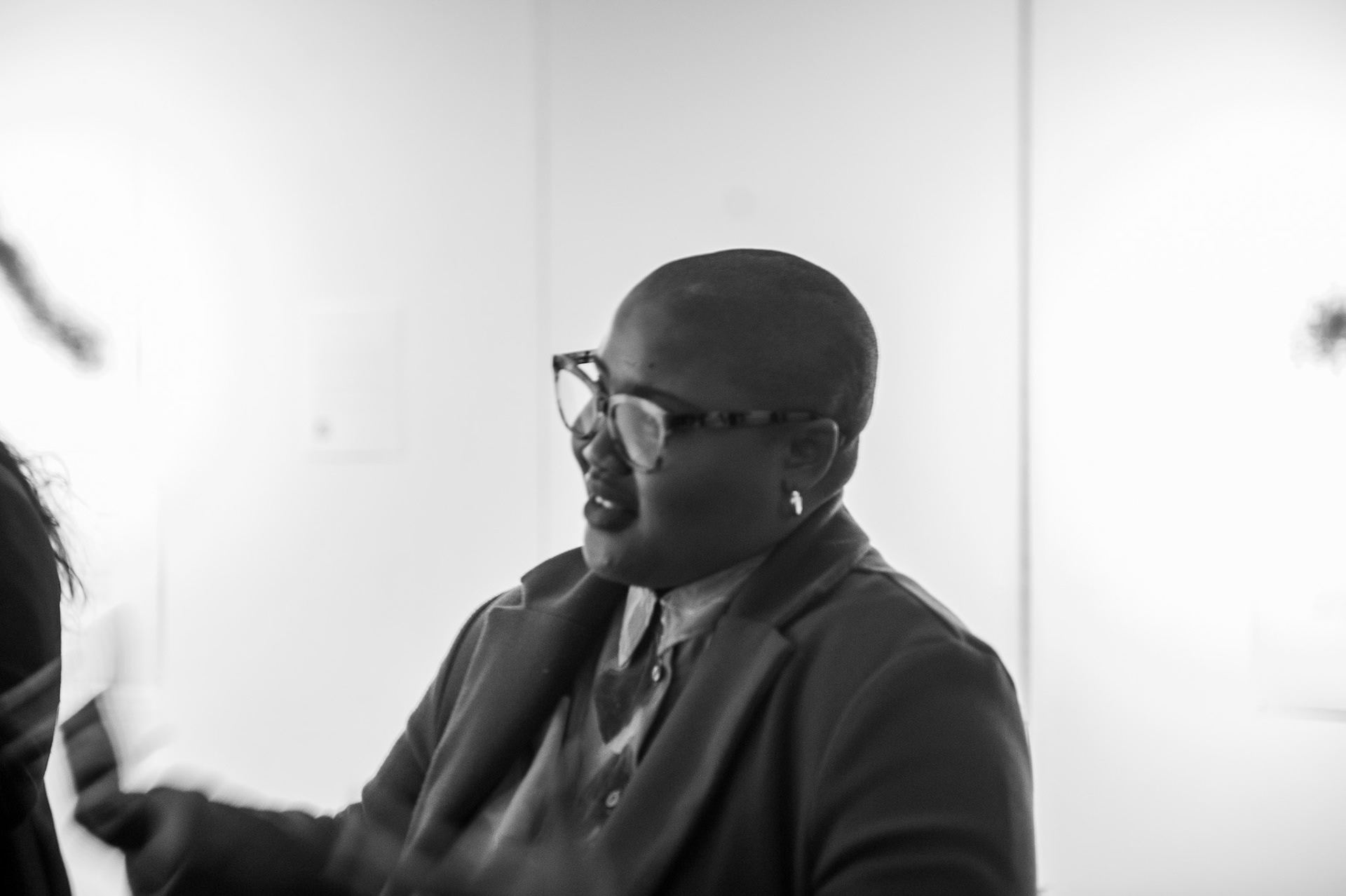






Performance offering by Creative Research Lab
On Friday 1st of September The Creative Research Lab presented a performative offering at NEXXUS. Lorin Sookool explored improvisational dance as a decolonial practice alongside sound selections by Michael Bhatch and Katlego Chale's dramatized reading of poetry by Nondwe Mpuma and Lesego Rampolokeng.
The performance offering was followed by a Circle Conversation where the artists and the audience shared provocations in response to the performance and the exhibition which were layered with themes of connection, fragmentation and allowing.
Responses to the offering explored sympathetic connections through embodied play... "It was like being in a playground, finding moments to play with everyone else..."
Look out for future events from NEXXUS and the Creative Research Lab to connect at the next moment.


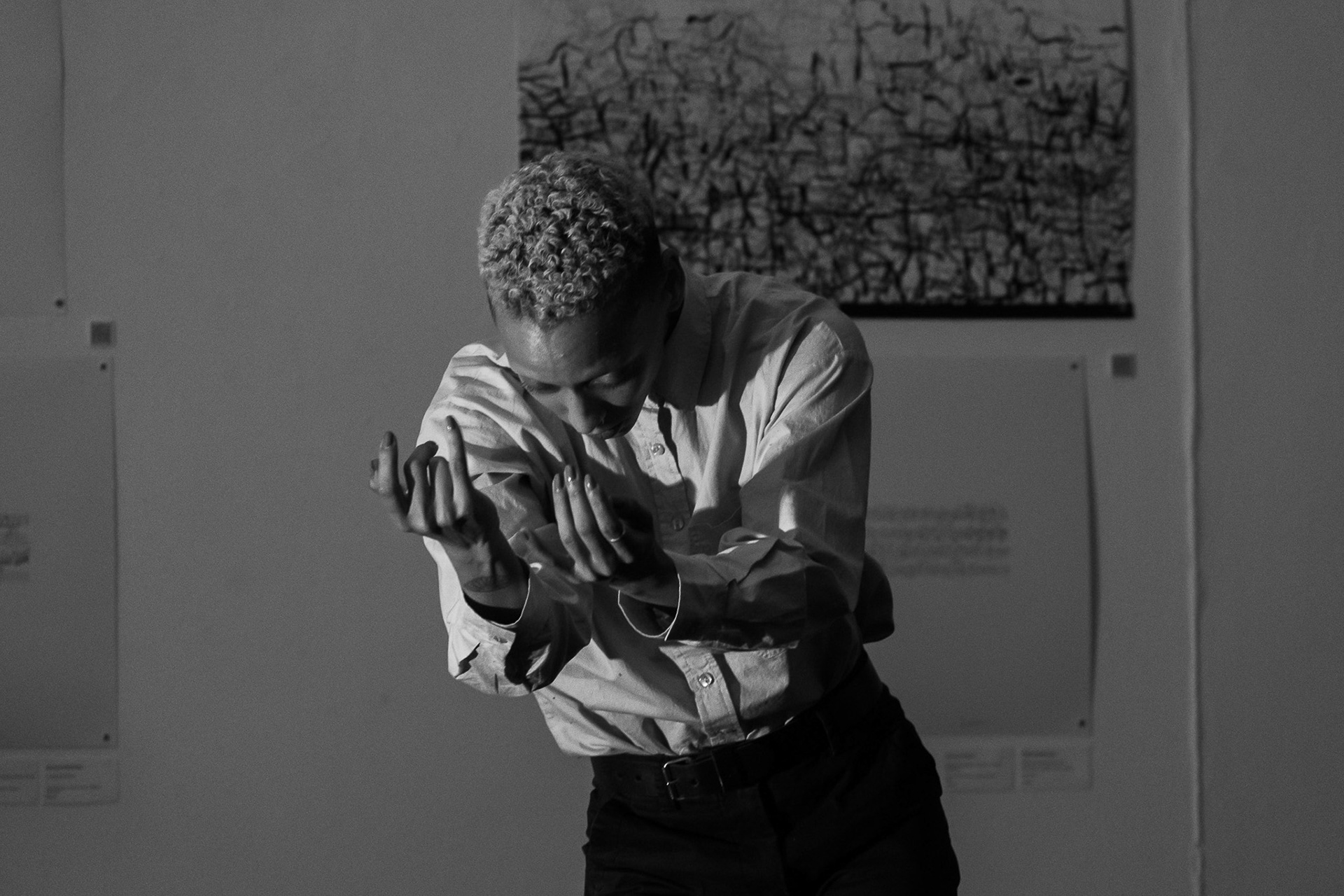







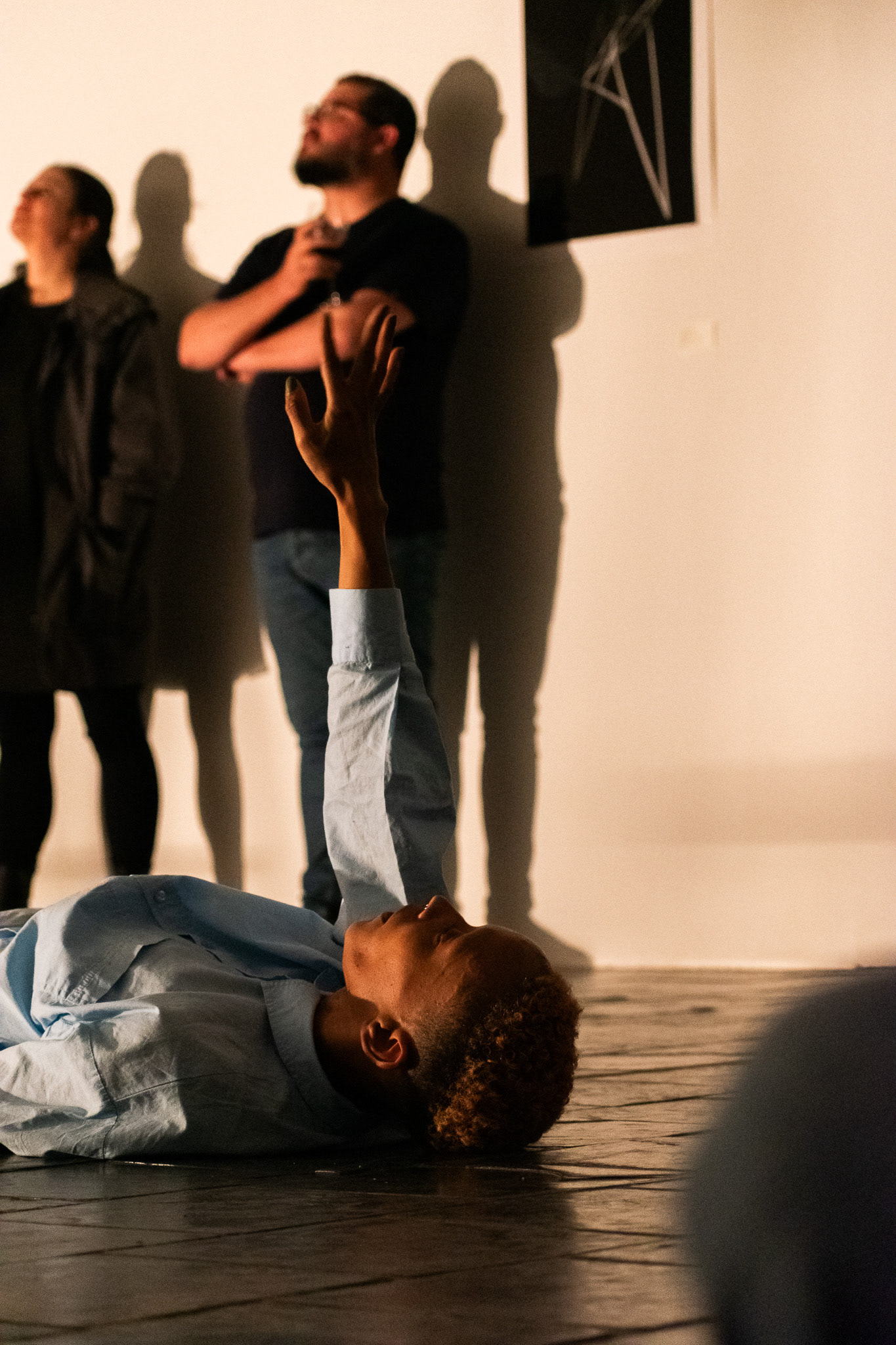

"Weeping the World" performance offering
On Friday 1st of September the experimental collaboration "Weeping the World" was performed by poet Masai Sepuru, visual artist Sonya Rademeyer and composer Franco Prinsloo.
The soundscape is a deconstruction, and eventual reconstruction, of phrases from Prinsloo’s 2021 choral composition, Vox Dicentis: Clama which was composed for the public performance Vuurbees | Fire Beast which is based on Isaiah 40:8"
A voice says, “Cry out.”
And I said, “What shall I cry?”
Franco Prinsloo's soundscape was created by utilising short phrases recorded live by Vox Chamber Choir, reassembled, stacked and looped to create a shimmering, dense and immersive ocean of sound. The word Vox (Voice) is presented in dense layers of clusters, suggesting a soundscape of weeping voices. These weeping voices are woven in a canon-like style building towards an ever thickening of texture. The work is resolved with the phrase Quid Clamabo? (What Shall I Cry?) suggests a helpless plea.
Sonya Rademeyer's video piece explores notions of non-belonging within the South African landscape, viewed through an anti-colonial lens. The weed Echium plantagineum (commonly known as ‘Paterson’s Curse’) and the Aloe is used metaphorically. Incorporating botanical material attached to her performance skirt, Rademeyer physically severs the Aloe existing leaves attached to her before creating a new 'language' with her performative drawing whilst using smaller, newer leaves. The performance raises fundamental questions of belonging, issues of trauma caused by invasion, and ultimately the possibility of healing and reflection through art.

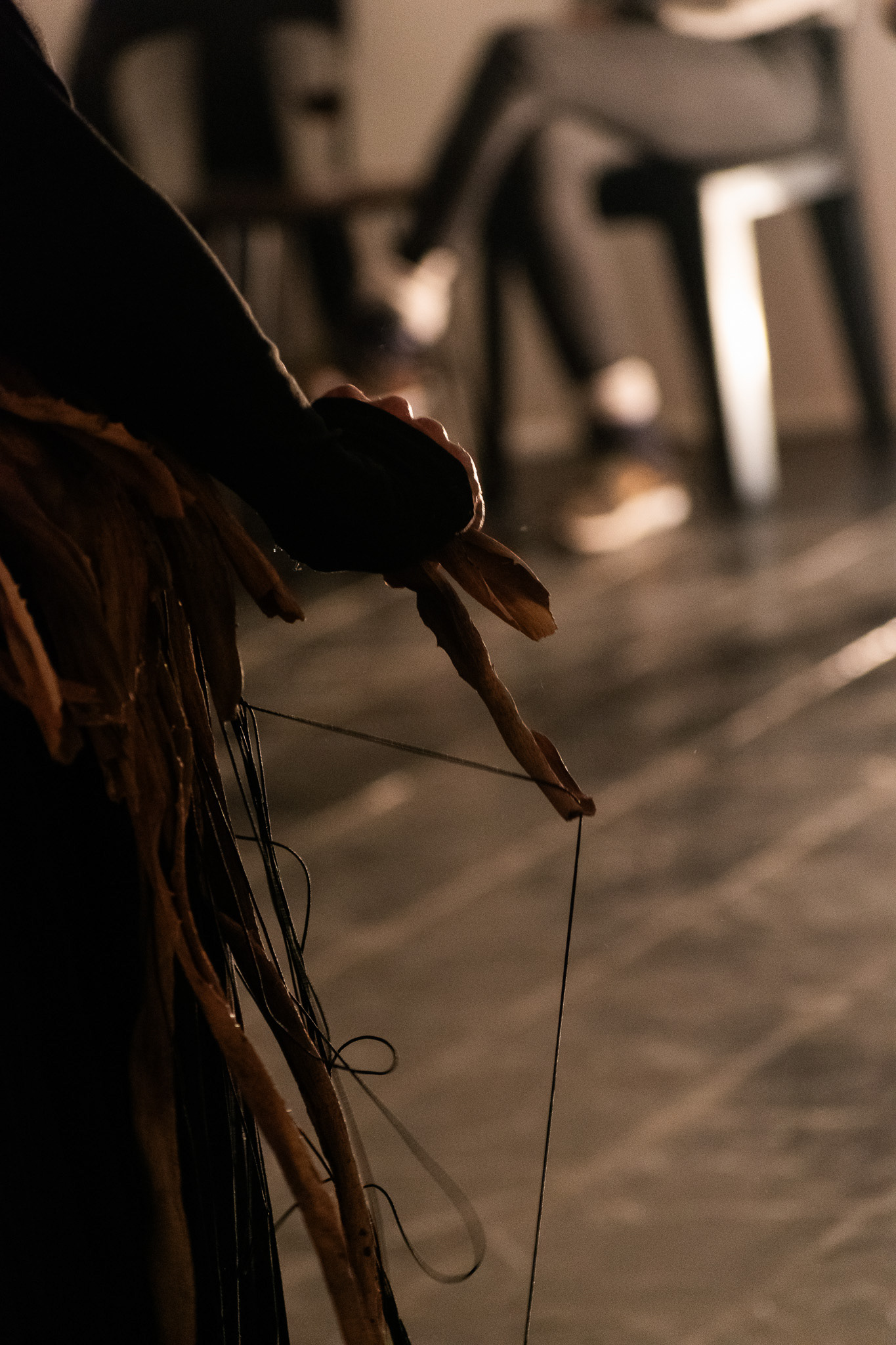
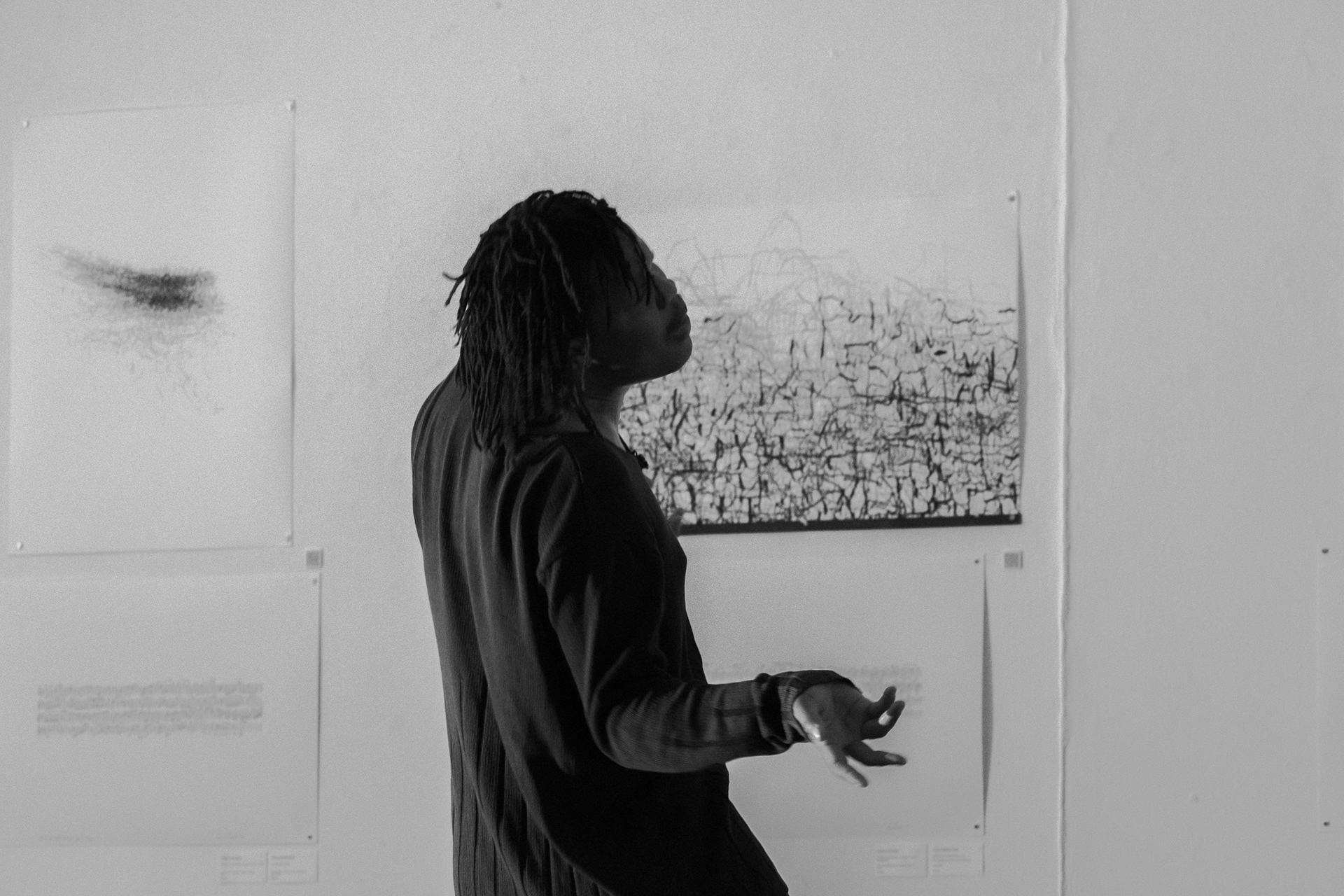
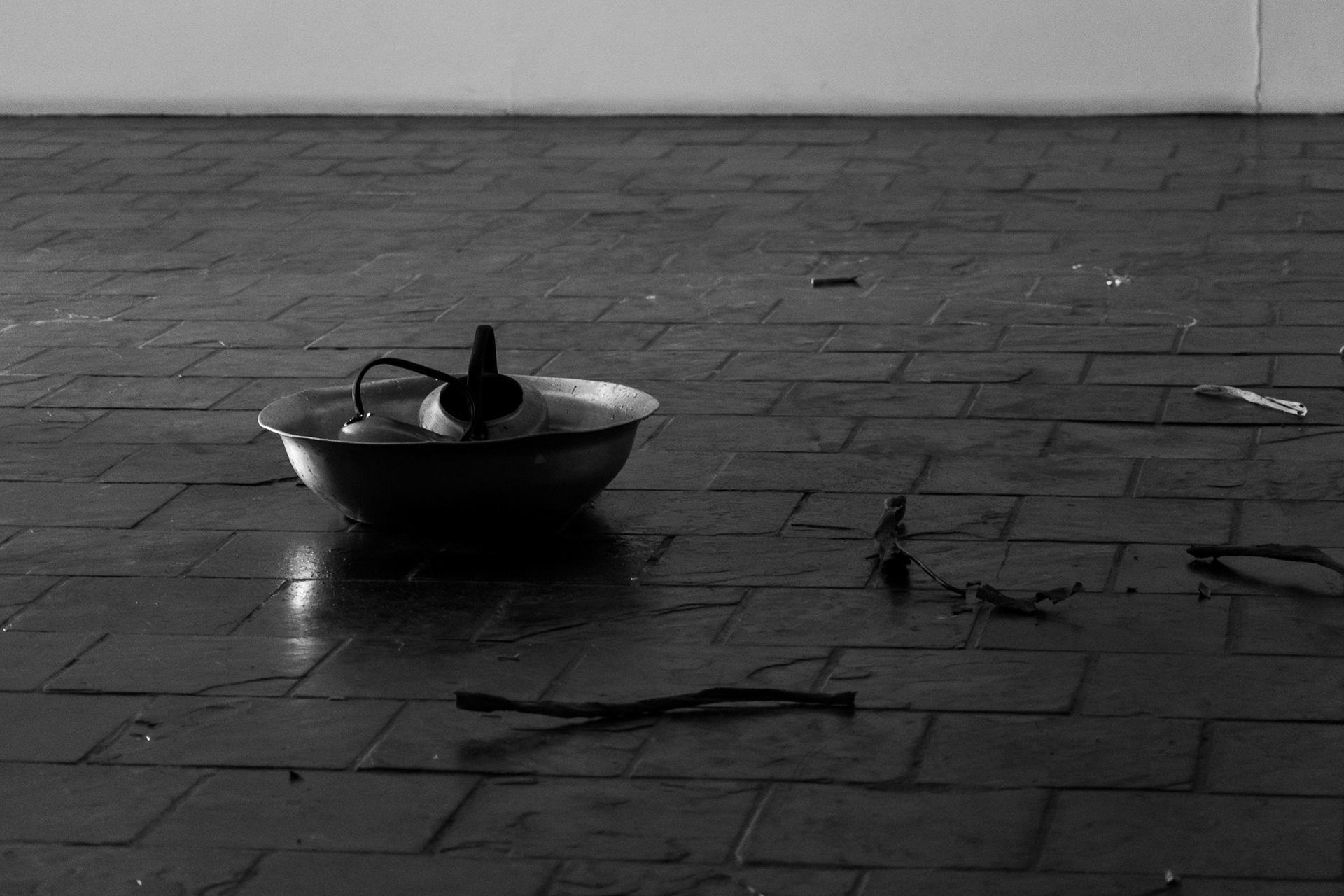
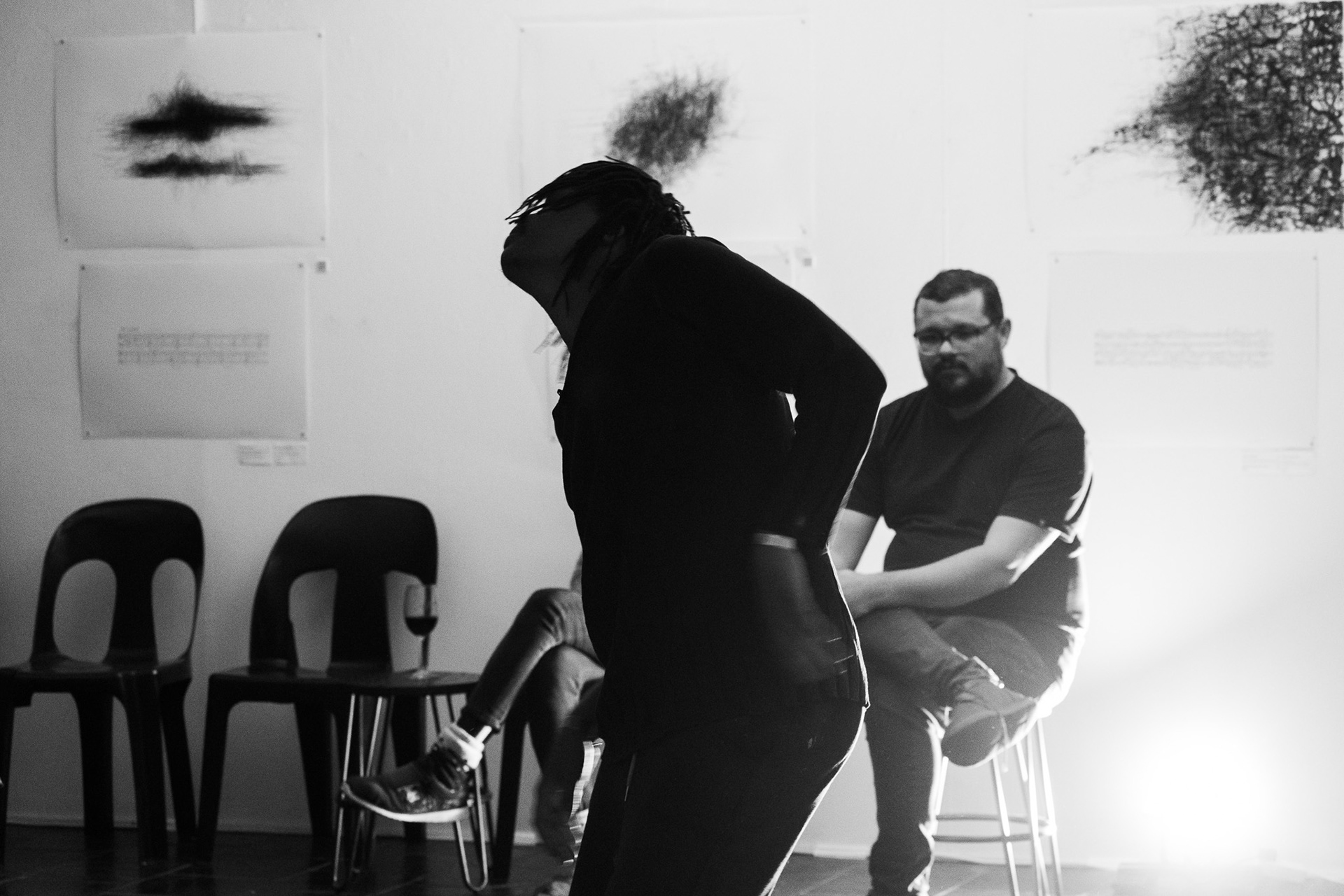







"Strings" performance offering
On 2 September 2023, 'Strings' was performed by poet Diana Ferrus, visual artist/musician Garth Erasmus, composer Franco Prinsloo and visual artist Sonya Rademeyer.
Prinsloo’s soundscape served as the departure point for this multidisciplinary collaboration between these South African artists. The performance speaks to notions of loss and severing, particularly looking at the extinction of Indigenous languages which is explored through morse code, performance and poetry.
South African composer and sound artist, Franco Prinsloo, depicts the pre-linguistic universality of ‘brokenness’ and themes such as alienation and anxiety via sound through the interpretation of Diä!kwain’s poem “Song of the broken string”, as recorded by Lloyd and Bleek. The broken string is a metaphor for the devastating loss indigenous people experienced by their touch with the coloniser. Prinsloo transcribed the poetry of Diä!kwain into Morse code, the method of transmitting text information that has widely been used in the early 20th as means of communication but is today best remembered as a means of sending a distress signal or SOS as a series of on-off tones, lights, or clicks.
These tonal clicks recall and honour the extinct unique sounds of the /Xam language which had a series of eight click accompaniments. In this sound installation, clusters of Morse tones become a minimalist soundscape of distress-calls sending Diä!kwain’s lament into the world. The code, a symbol of colonialism and westernisation, echoes the extinct /Xam languages, eluding meaning to the contemporary listener. Ironically, the poet's plea is obscured by forgotten colonial code, but attains new meaning through juxtaposing the poetry of Diana Ferrus, poet and cultural activist, with this layered soundscape:
"My poem will become the voice of the narrator who will speak from history and the present, a cry for help, a cry for justice, a cry for caution (not to repeat past mistakes), a plea for a language dying, a plea for recognition, a plea for restoration."
For visual artist Sonya Rademeyer, this work is an acknowledgment of the ongoing trauma that remains connected to the loss of Land, when the 'strings were broken' for the San and Khoi First Nation Peoples. Her performance responds to this loss by enacting the land-grabbing by early colonisers through the hoarding of clay balls under her string performance-skirt. Rademeyer attempts to force the trajectory of history by smashing the earthen balls with the horns of bull. She 'returns' the lost and stolen Land, by pushing the debris to the feet of Diana Ferrus whose ancestral heritage is rooted from both Khoi and Slave peoples
Garth Erasmus responded intuitively to the performance.





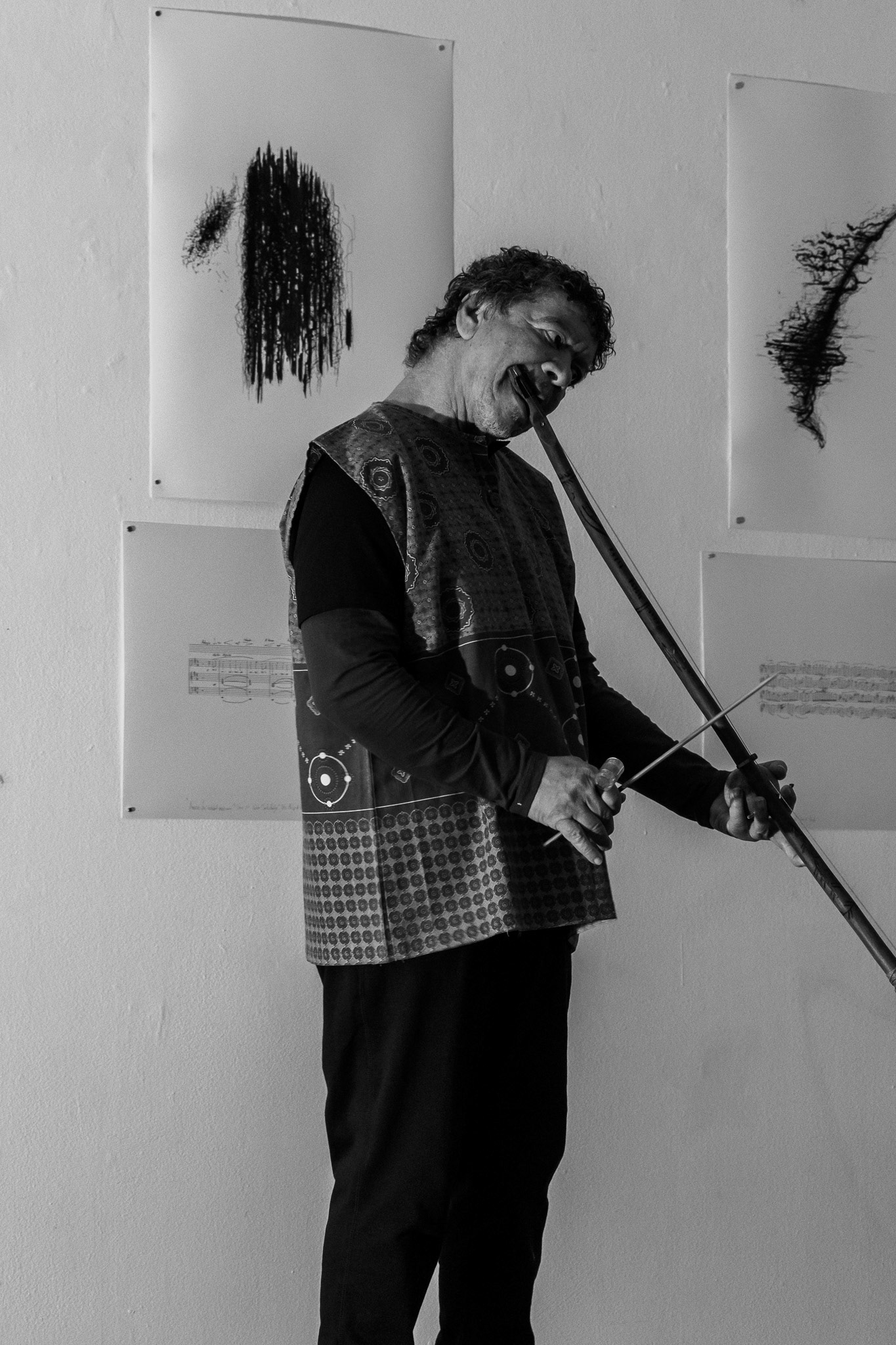






"Recipes, Remedies and Rumours" by Refiloe Lepere & Itumelang Moeketsi, and Nomfundo Masilela
The play 'Recipes, Remedies and Rumors', performed on 2 September 2023, is a site of how the body organizes everyday practices of living, breathing and affirming values, beliefs, and aesthetics of women’s work. The play gives expression to notions of memory and the black body. Using movement as an aesthetic choice to navigate trauma stories. The body reveals our ability as humans to handle the things that fall in between the cracks of language and understanding. The things that aren’t clear cut, the fault lines. Trauma is in its illusive strategy of falling in between lived experiences and memories. We look at the strategies used to understand, perform, and rework trauma stories, the recipes, the remedies and rumors and how they reimagined themselves through the lens of performing black women.
Recipes, Remedies and Rumors is a story of a mother who loses her son to a mob killing. She never gets answers. She never gets over it. Her life holds the desire for revenge and the resurrection of her son. As we draw parallels with the transnational history of state terror and unbridled racism. We explore the complexity of stolen lives and the remnants of those left behind. What are the recipes that reshape lives whole again? This play is intentionally explored through the lives of two female bodies who, along with countless black women in South Africa, the US and beyond carry the womb pain of shattered black bodies. This is a meditation on personal histories, justice, accountability and radical wholeness by any means necessary.



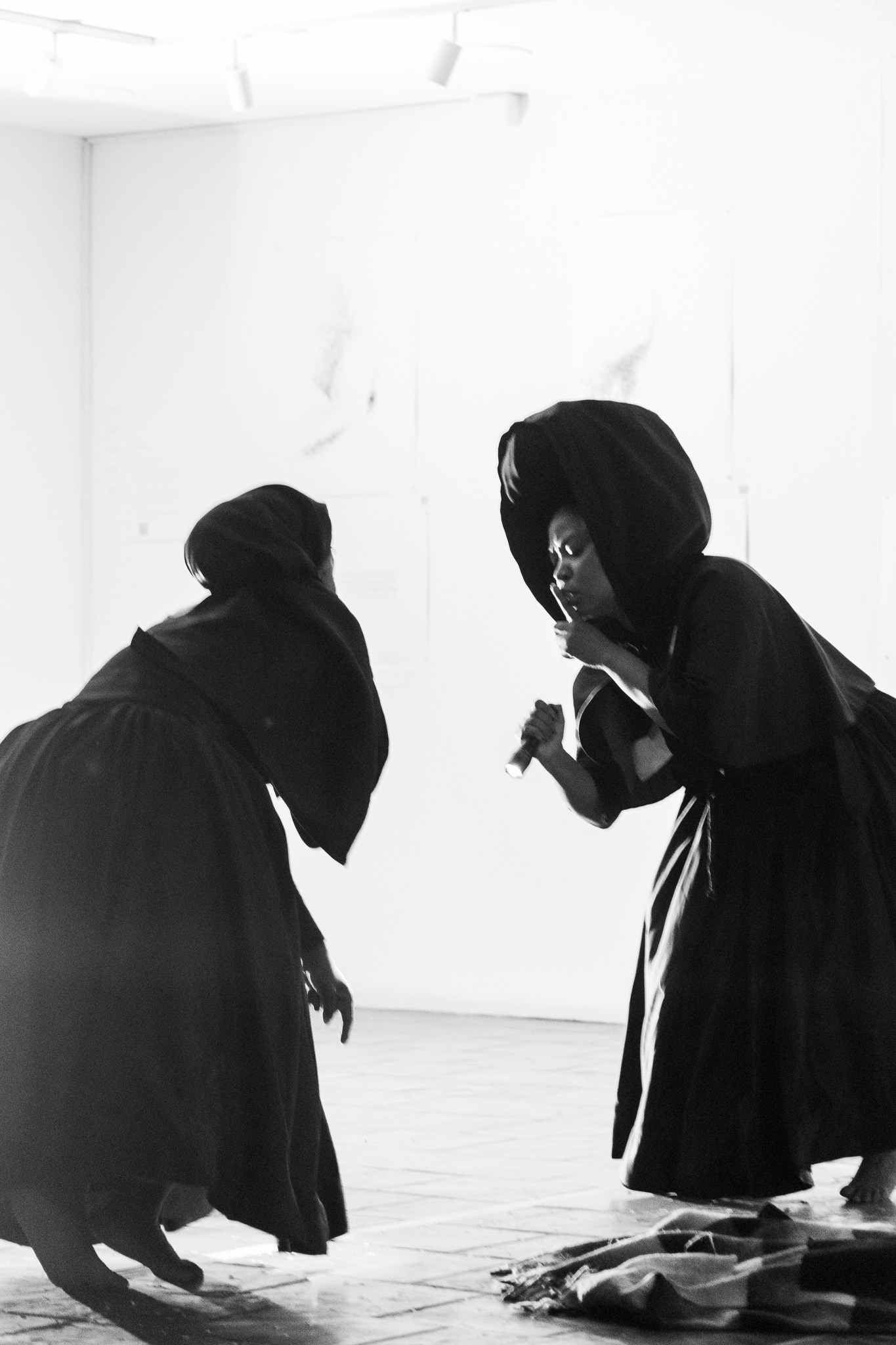
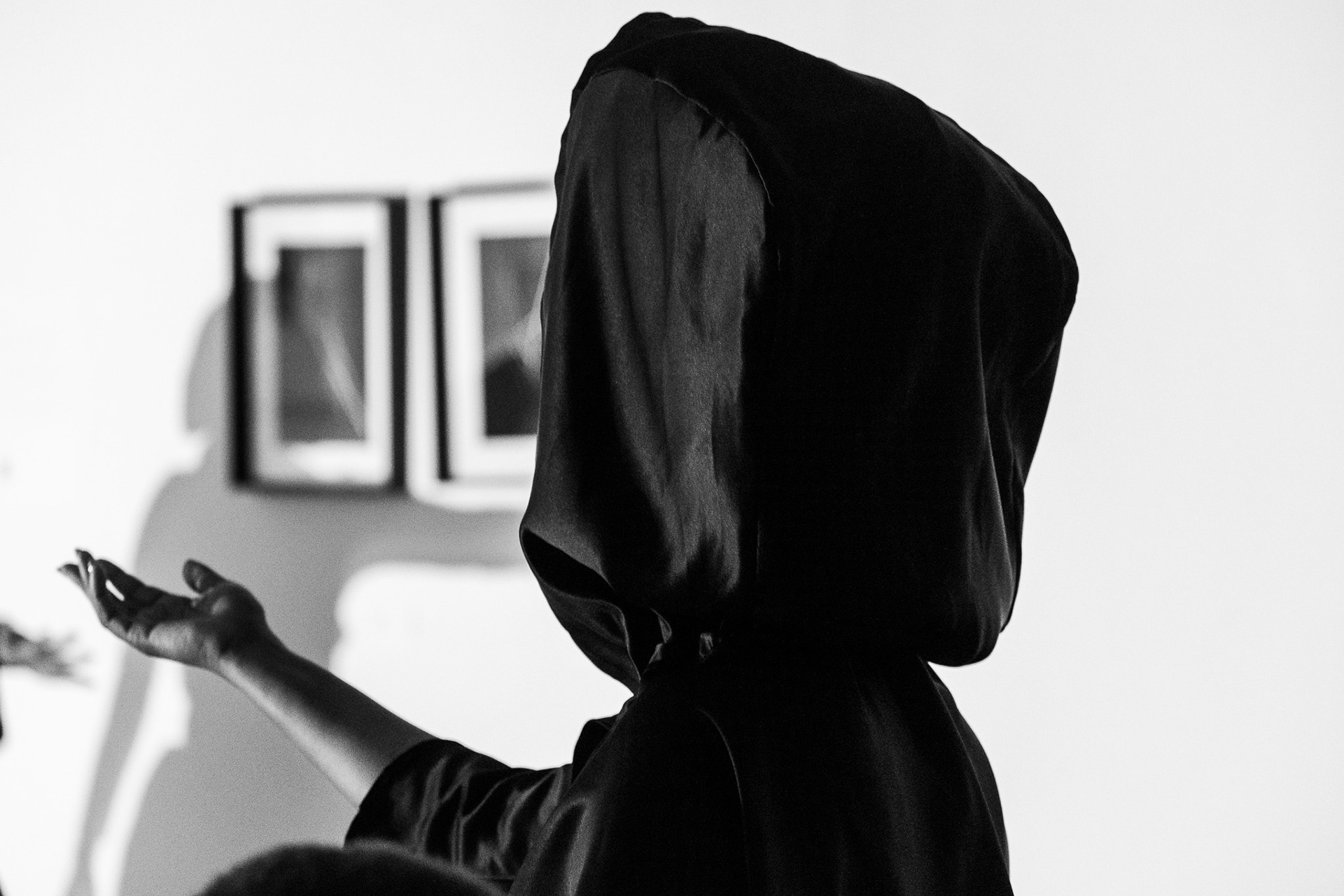




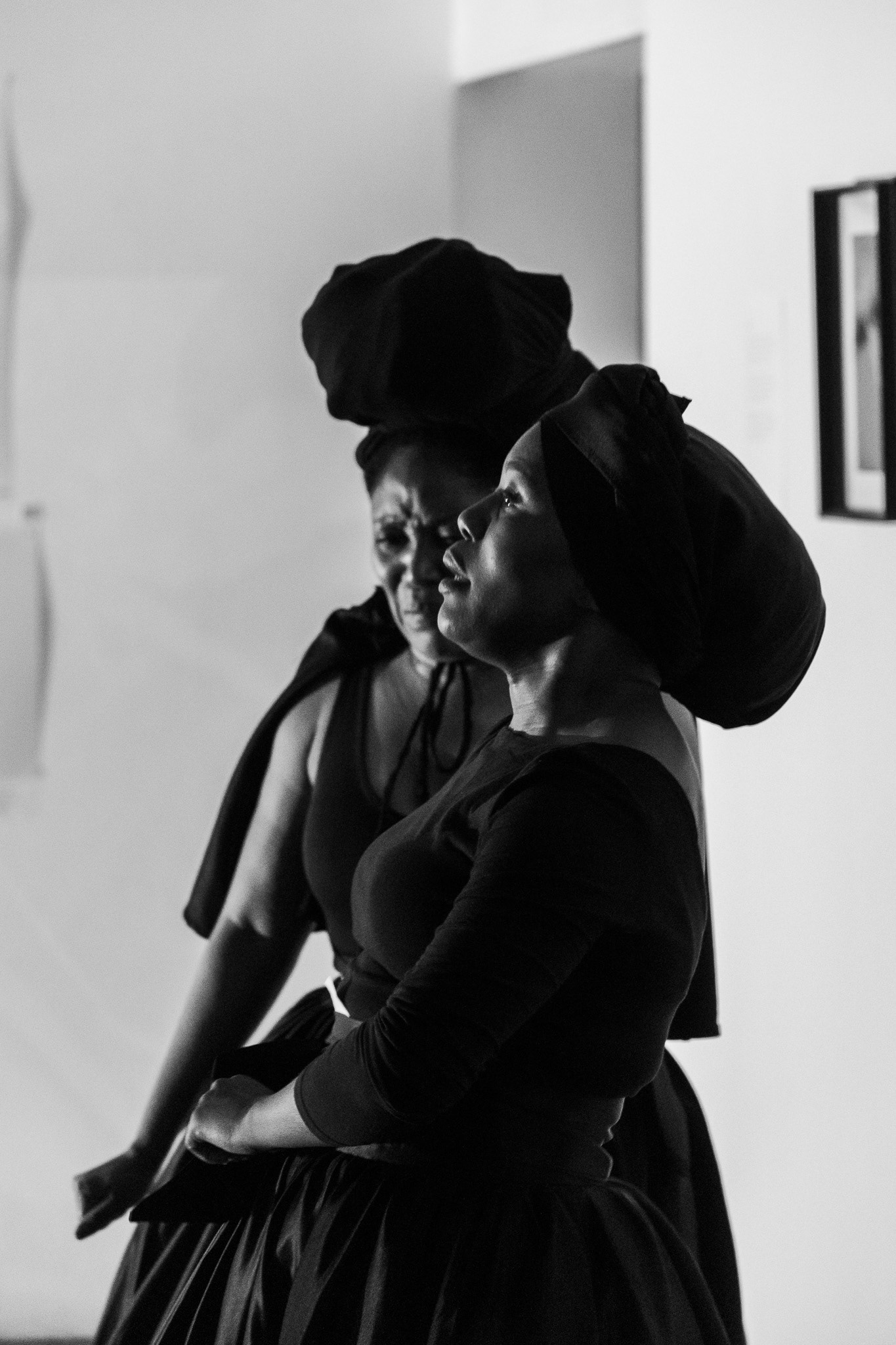

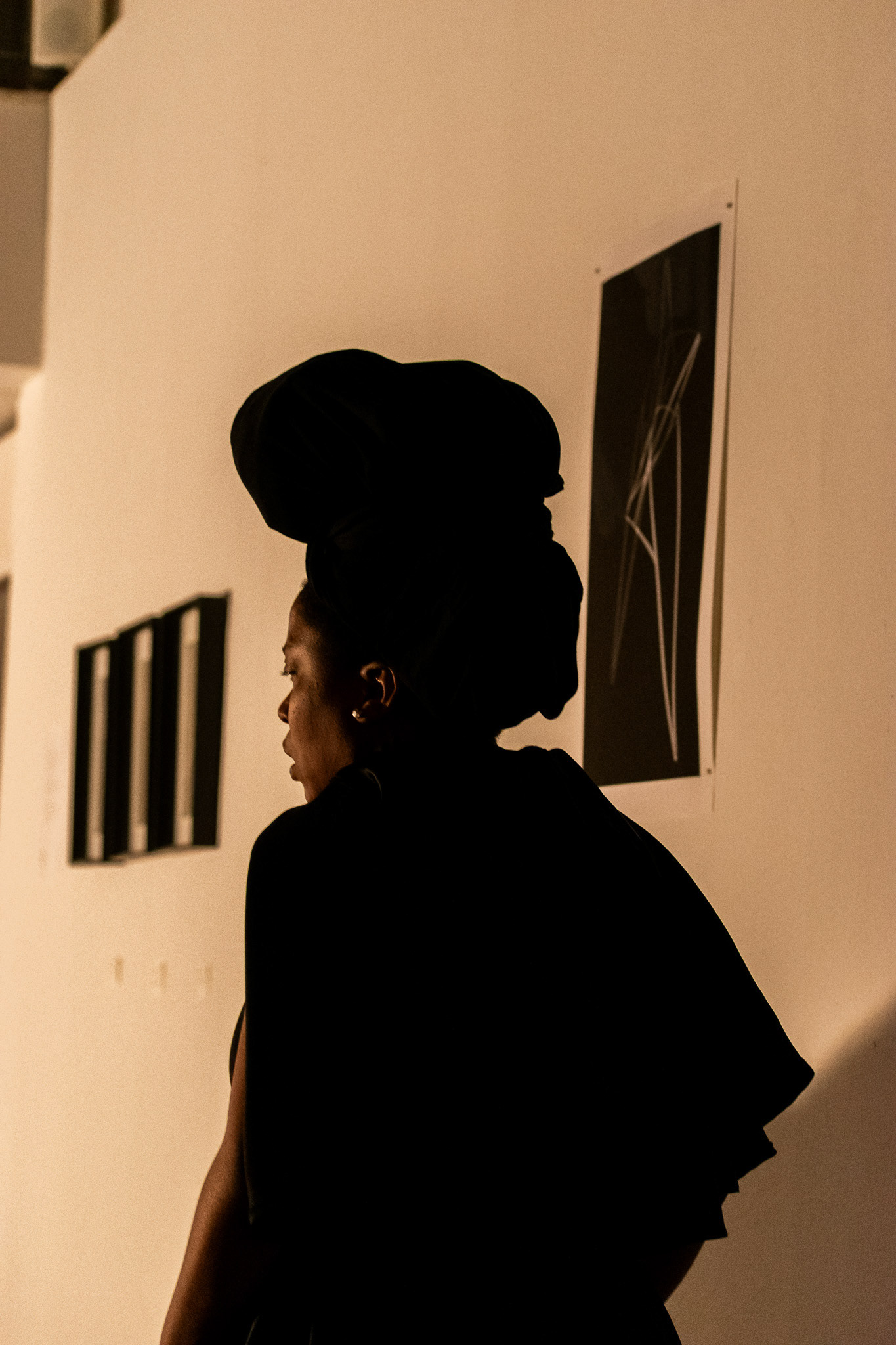



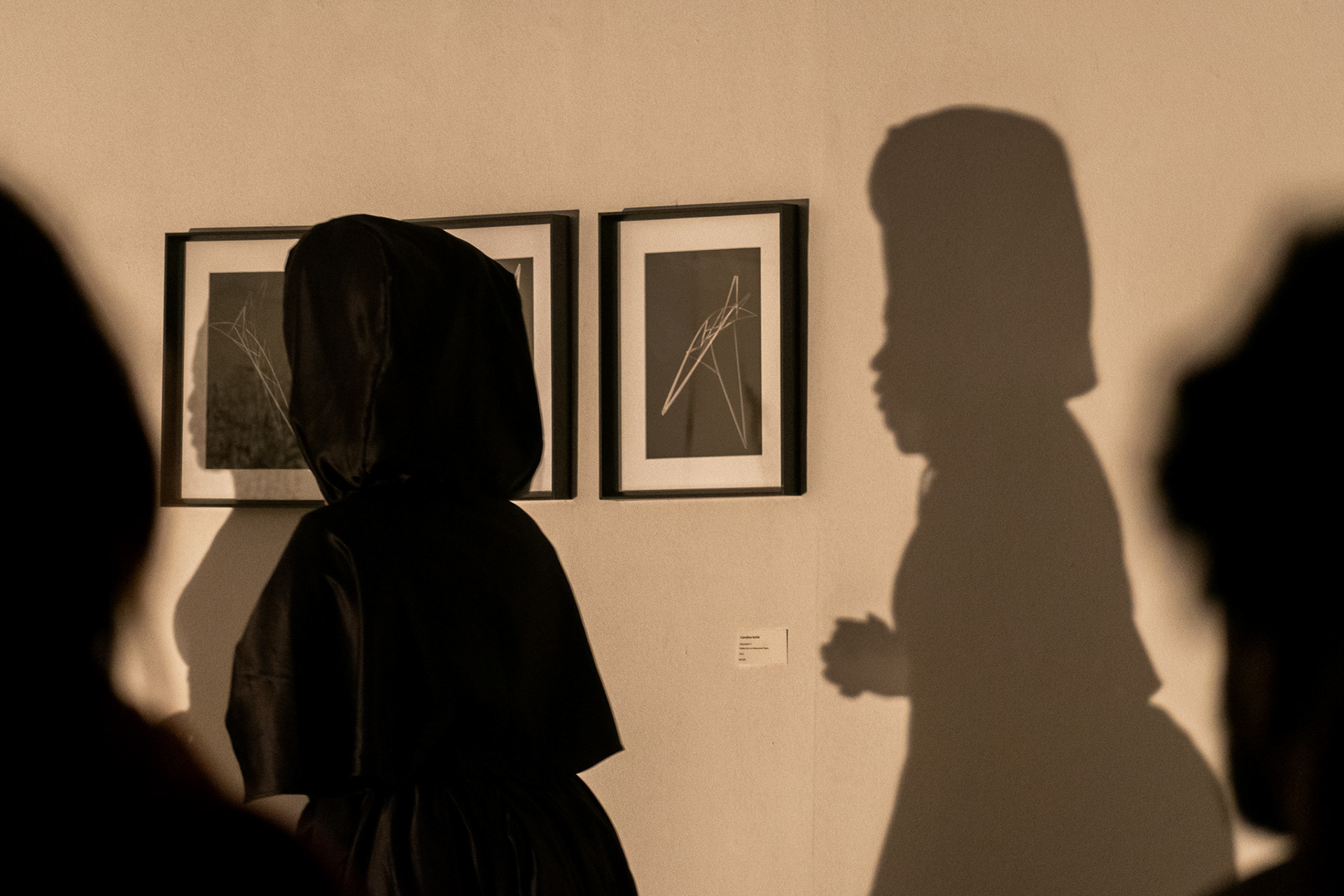
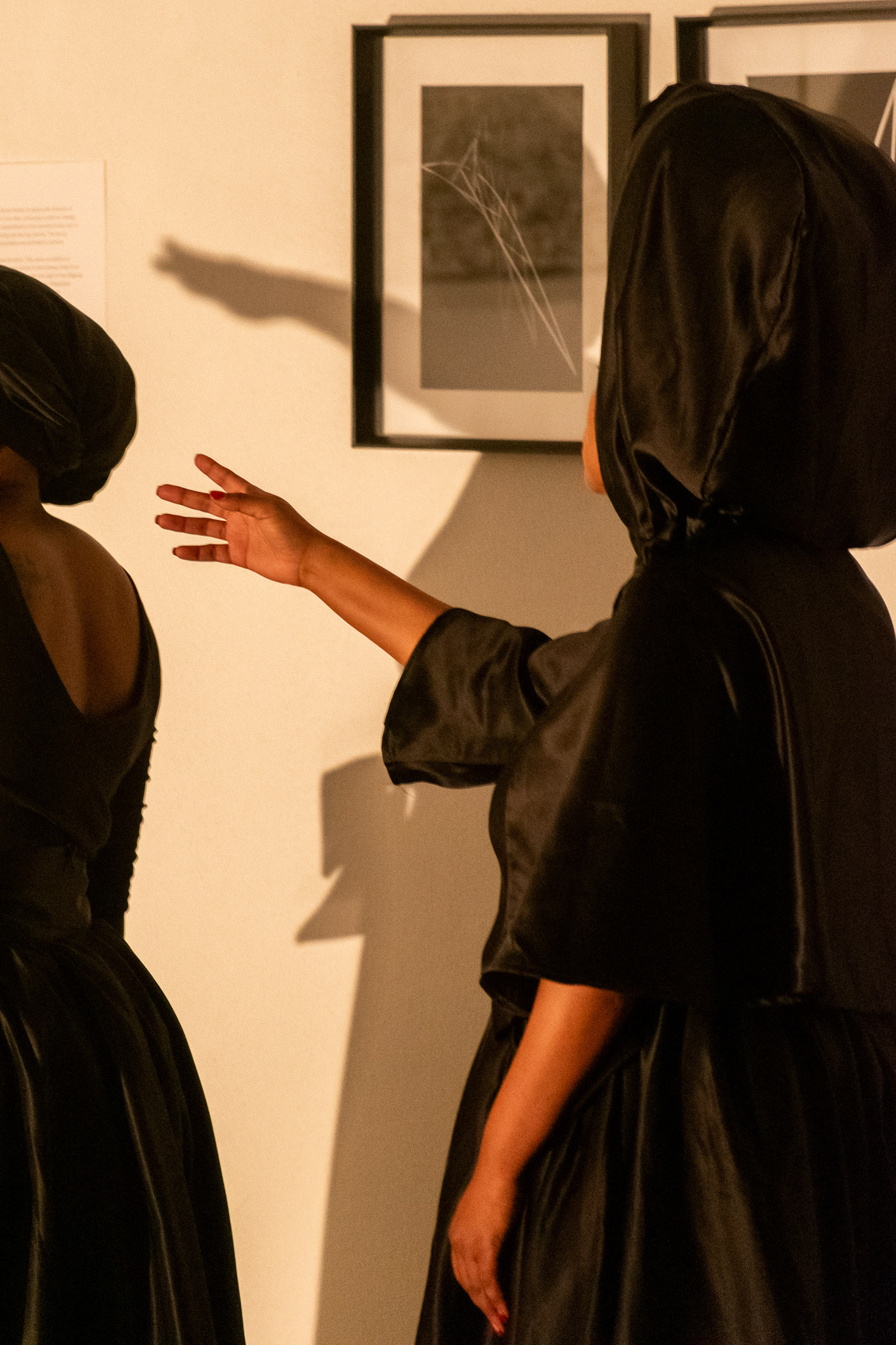
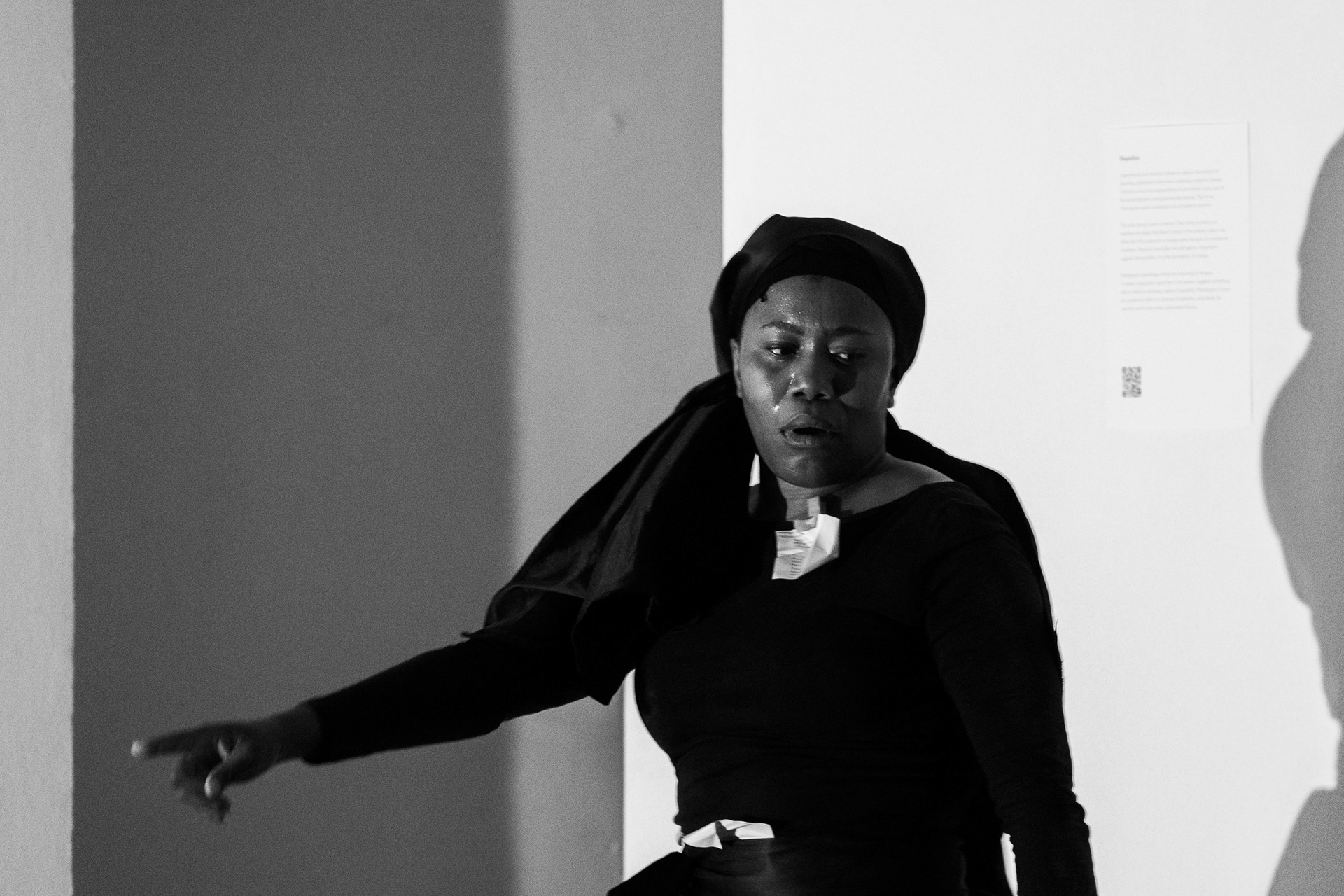



Collaborative drawing performance
On 22 September 2023, the AVA Gallery opened its doors to an incredible collaborative experience! The performance was opened up by visual artist, Sonya Rademeyer, who read a section of her Drawing Manifesto:
A drawing when witnessed is a collaboration
A drawing is a collaboration when breathed together
A drawing is breathed together through participation
A drawing is participatory through embodied presence
A drawing is when embodied presence honours beyond the physical
A drawing is beyond the physical when is transcends thinking
A drawing transcends thinking when is connects to the spiritual
A drawing is spiritual when created through embodied language
A drawing created through the language of embodied presence is spiritual
A drawing created through collective embodied presence is energy that, is
A drawing performed across time and space.
This reading was followed by four intuitive drawings done by Rademeyer, as she responded to composer Franco Prinsloo's compositions for Bassoon, Voice (x2) and Accordion. The four "missing drawings" completed the "21 Days#music_for_isolated_musicians" series which started in the early days of the COVID_19 lockdown: Prinsloo composed 21 drawings and invited isolated musicians from across the world to download the music, play it on their instruments and send back a cellphone-video capture. Rademeyer subsequently responded to these sonic element of the videos through gestural drawing. The four drawings were pinned to the AVA exhibition wall by Prinsloo.
Both Rademeyer and Prinsloo then invited audience members to join in the drawing process, by offering white marble-sticks do draw with onto three pre-prepared blackboard-painted trestle tables. Initially the collective drawing started somewhat cautiously, but as those who were drawing started connecting to the sonic reverberations of Prinsloo's musical composition there was a shift in energy that remained heightened during the 40 minute sound piece! Prinsloo's musical offering was, in fact, the super-slowed down composition for Harp! As the collaborate drawing progressed, other drawing elements such as soil and twine was added, which contributed to a more sculptural experience.
With the entire audience participating in the drawing experience, there was, quite honestly, something that happened that remains incredibly difficult to articulate. It was an embodied experience that connected to some primal space, echoing back into the contemporary to remind us that we are ... still ... connected to one another ... across culture, race, gender and age.
We sat silently for a while. All of us. It is fair to say that these echoes remain ...






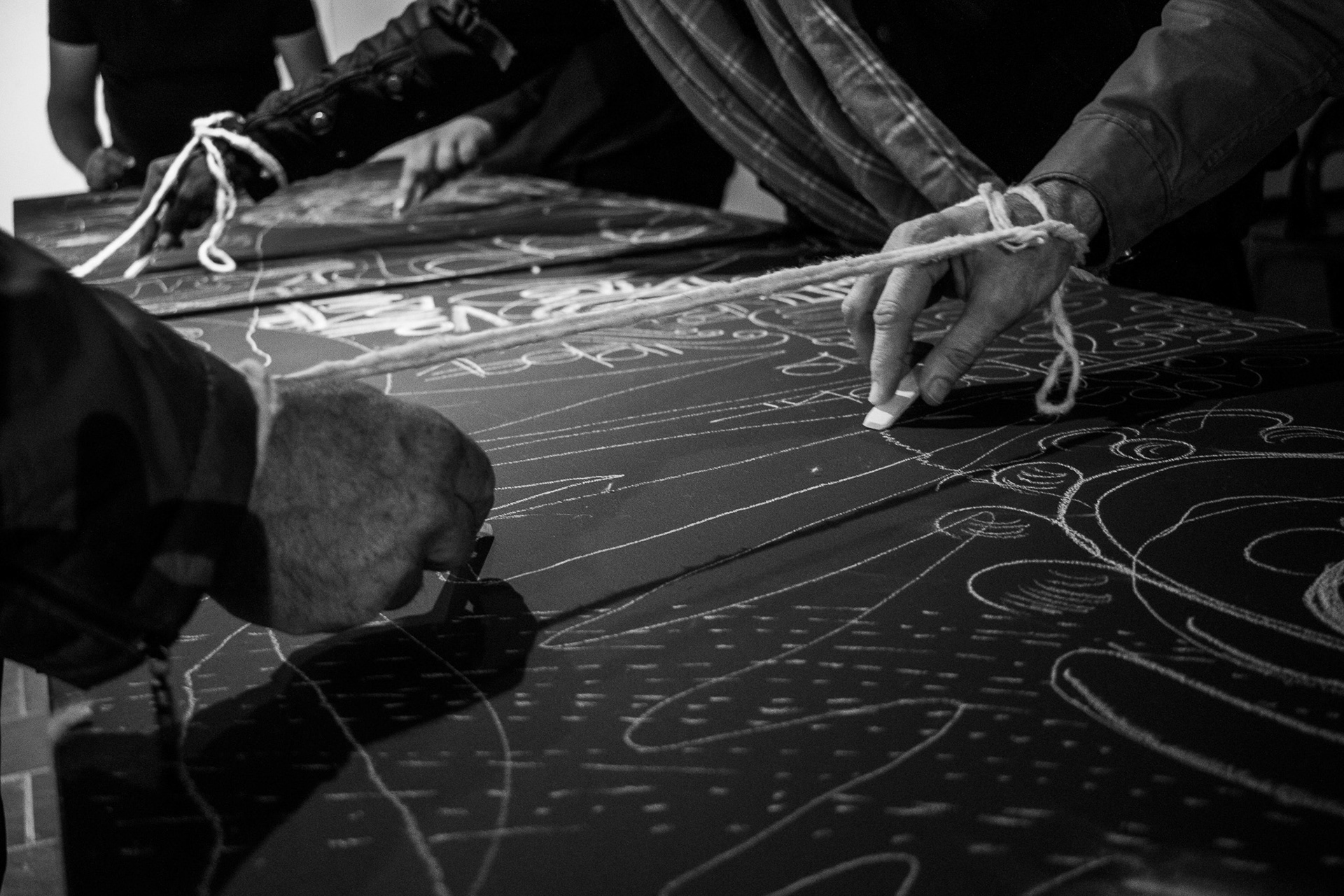




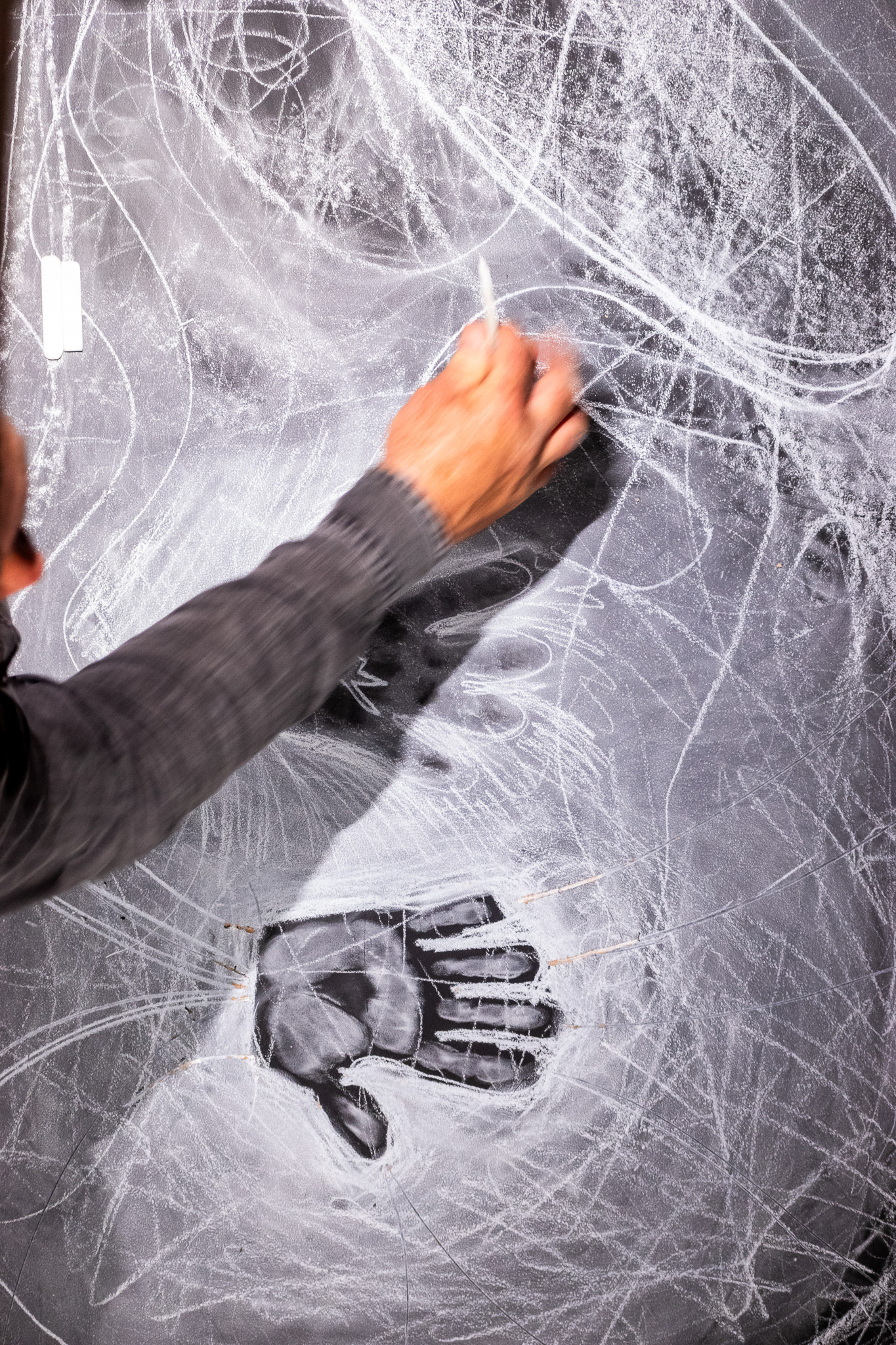
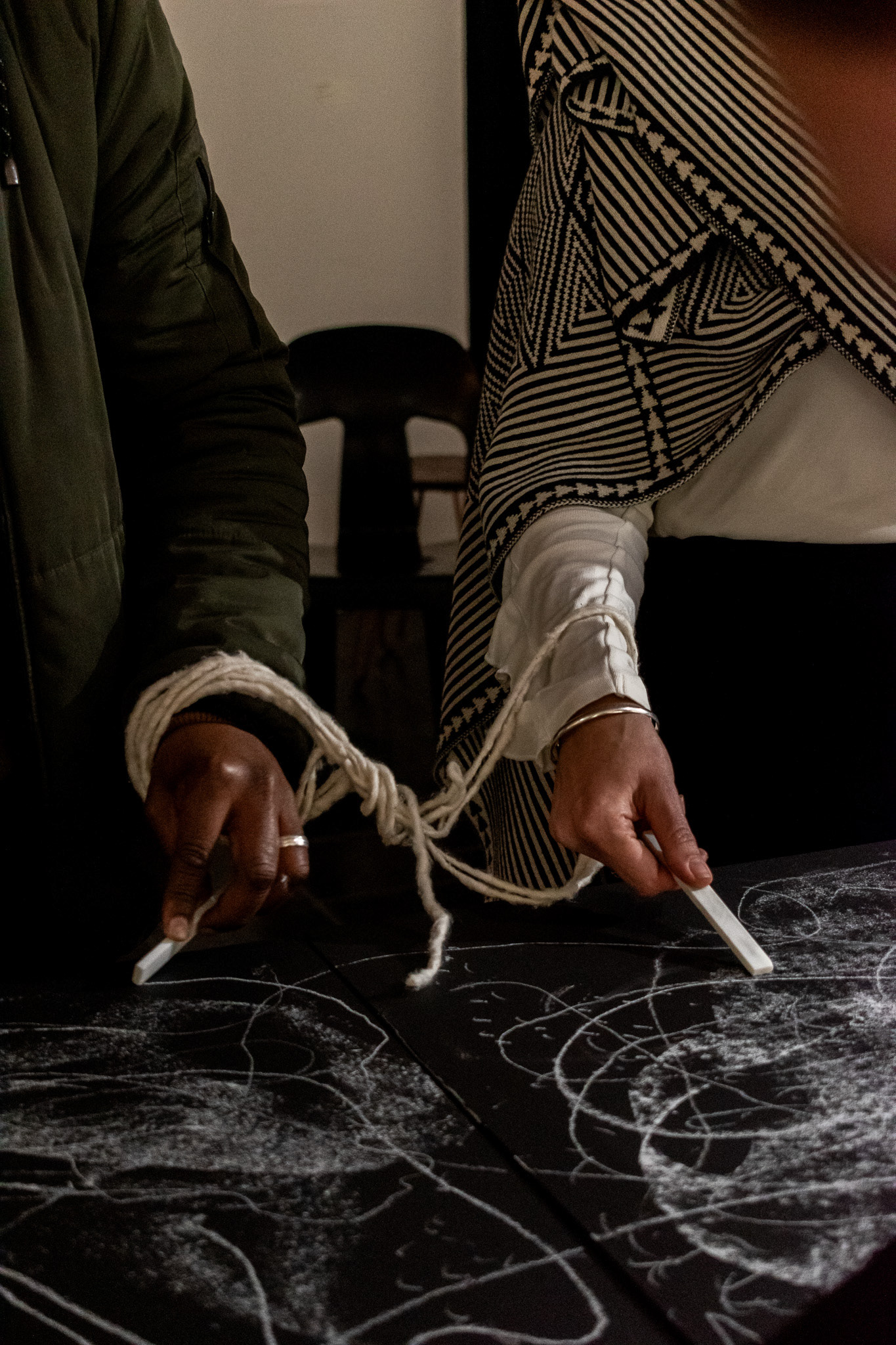
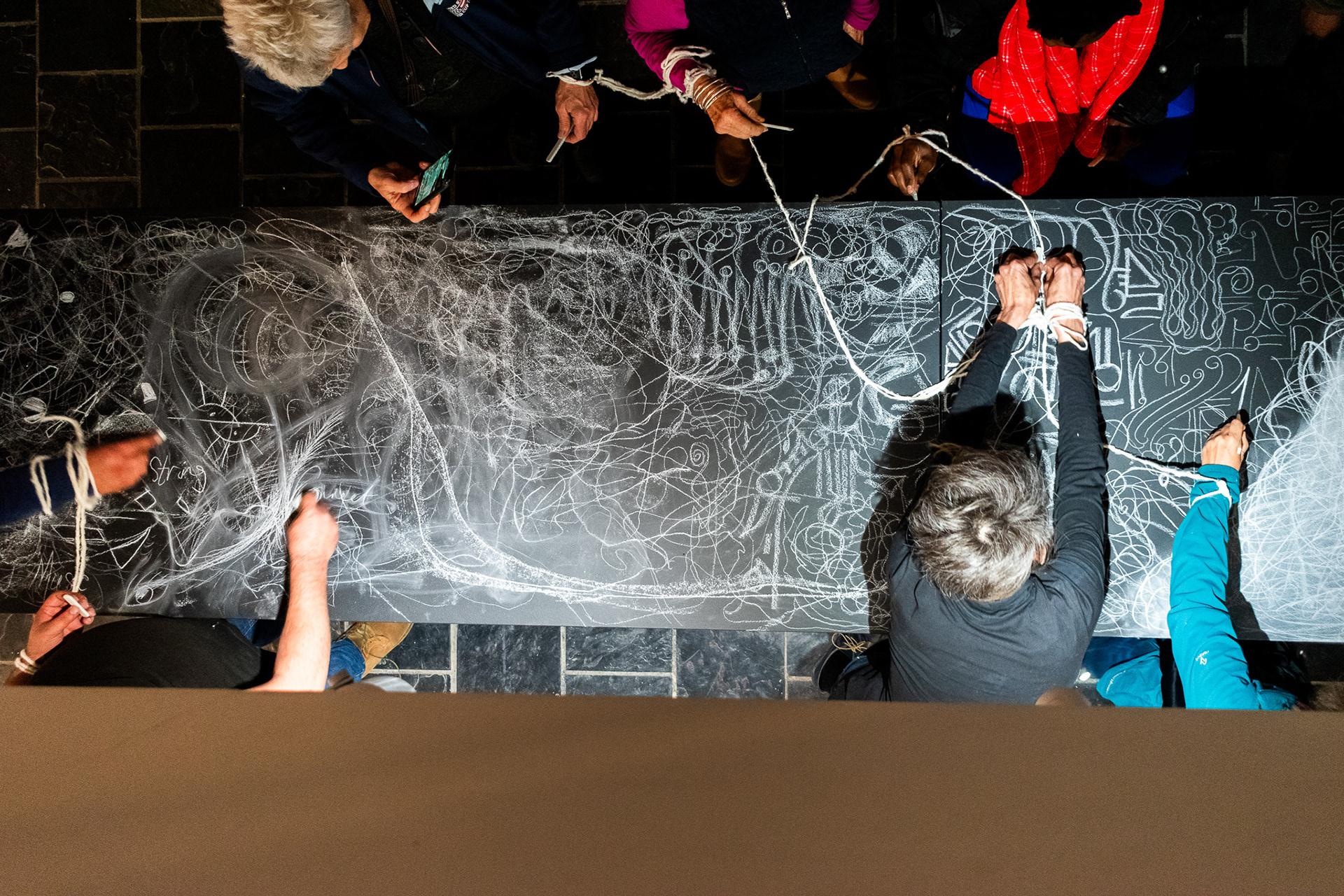

FUNDERS
with deep gratitude